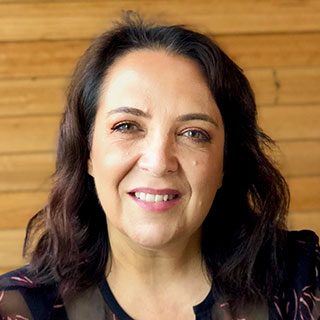Module 1:
What is metastatic breast cancer?
The first module within the sequence focuses on contextualising the stimulus-response model. The idea in this module is to understand metastatic cancer as the issue, and to understand what can be observed under a microscope: the epithelial-mesenchyme transition. This module provides requisite activities to put the students into an investigative research mindset. It is possible that this module could take 1 hour of class time.
Summary
VCE Biology (2017-2021)
Unit 3, Area of Study 2, Outcome 2, VCE Biology Study Design
Module 1 focuses on setting the context for inquiry
Duration

Student learning outcomes
Upon completion of this module students will be able to:
- Describe and demonstrate what metastatic breast cancer is
- Compare the structural and functional differences between epithelial and mesenchymal cells
Teacher background information
A study of cancer in relation to uncontrolled growth is taught when teaching the VCE Biology Study Design Unit 2 Outcome 1: How is continuity of life maintained. Students should therefore be familiar with some basic features of cancer. Metastatic or secondary breast cancer is a condition where cancer cells have spread to another tissue in the body and will therefore need exploring and explaining. With a basic understanding of metastatic breast cancer and an introduction into the epithelial-mesenchyme transition as the process necessary for tumor cells to spread, module 2 focuses on the microscopic element of metastatic breast cancer from researching therapies, i.e. surgery and radiation, to signal transduction inhibitors.
It is in the context of Professor Leigh Ackland’s work at Deakin University that metastatic breast cancer is studied. Professor Ackland’s work provides an opportunity to use contemporary research to study the stimulus response model including: reception, signal transduction and cellular responses, in addition to further appreciating the complex structure of a cell and the nature of scientific research.
More information
Metastatic cancer is a condition in humans where a cancer (wherever it is in the body, i.e. breast, lung, bowel, prostate) is in two or more places. The cancer has spread into an adjacent tissue because of its uncontrolled growth or tumor cells have detached themselves and traveled via the blood or lymph. Metastatic breast cancer occurs when a breast cell carcinoma – a tumor that has formed from epithelial cells (carcinomas are cancers formed from epithelial cells that line the inside and outside of the body), can travel to and take up in another tissue, i.e. the bone. However, the phenotype of the cancer retains some epithelial breast cell characteristics (as well as having the features of cancer cells) and not bone cell characteristics. Therefore, it is not called bone cancer but instead, metastatic or secondary breast cancer.
Additional information
Website
Metastatic Breast Cancer
Cancer Australia was established by the Australian Government in 2006 to benefit all Australians affected by cancer, and their families and carers.
Website
Metastatic Breast Cancer
A look at cancer cells under the microscope with a good example of the differences between normal and healthy cells
Video
Cancer – Introduction I (5:34)
An informative creative video-drawing presentation about the basics of cancer.
Video
Cancer - Metastasis (9:02)
An informative creative video-drawing presentation about metastasis.
Website
Diagram of Breast Cancer
To be used to identify where the epithelial cells are in the breast.
Teaching sequence
Inquiry Question
How do Metastatic Breast Cancer Cells Spread?
Student learning outcomes
On completion of this module, students will be able to:
- Understand the difference between epithelial and mesenchyme cells and how this is a step in the development of metastatic cancer: the spread of cells to other tissues
Duration

Prior Knowledge
- Unit 2: Cancer as the unregulated growth of ordinary cells.
Resources
Video
Metastatic Breast Cancer: Lesley's Story (2:30)
Leslie had a lump in her right breast (2012). She was later diagnosed as having metastatic breast cancer as a result of an x-ray and PET-CT.
Video
How cancer spreads (2:29)
A short and concise video with an animation from Harvard Medical School to show how cancer spreads.
Video
Epithelial to Mesenchymal Transition (<40 seconds)
This is an excellent video of embryonic stem cells – epithelial cells, transforming-transitioning into mesenchyme cells.
Video
Stop Animation: Epithelial to Mesenchymal Transition (2:30)
This stop animation introduces signal transduction for the first time in the sequence and highlights how epithelial cells are bound and need to penetrate the extracellular matrix which can be extended on in module 3.
Worksheet 1
(MSWord 585KB)
Epithelial to Mesenchymal Transition
This diagram shows epithelial-mesenchyme transition and differences between these cells
Activities
[Engaging and Exploring]
Activity 1.1 - What is metastatic cancer? (10-15 minutes)
Students are asked what they understand about cancer before metastatic cancer is explained and students’ ideas are written or drawn on the board. The video of Lesley’s story prompts the discussion before students are asked to explore the idea of researching metastatic cancer. The questions are explored and explained with the use of both the video microscopy and the stop animation before the students role-play the changes of a carcinoma cell. Ligand receptor binding is a part of the process while transduction and the cellular response is not studied here.
Think-pair-share and Brainstorm
Student are asked:
- How would the carcinoma cells get to the bone?
- What steps do these cells need to take to leave the tumor tissue?
- What cells in the body migrate?
Encourage students to draw and or list down their ideas and then invite students to share their thoughts. While the teacher can write students' ideas onto the board, students are invited to draw their explanations on the board if they need to.
[Explaining]
Activity 1.2 - What is an epithelial-mesenchyme transition? (30-40 minutes)
The video of the epithelial-mesenchyme transition is shown and it is explained that a cell in a tissue becomes a completely different cell type when it is able to do different things: changing structurally and functionally (its phenotype changes). An epithelial cell can become a mesenchyme cell and this process is referred to as an ‘epithelial mesenchyme transition’ (E.M.T).
Group role-play
Refer to Worksheet 1 (MSWord 585KB)
In this activity, students are provided with a labeled picture of the differences between an epithelial and mesenchyme cell. Working in small groups their task is to represent the epithelial-mesenchyme transition using role-play. They must represent the five pieces of information involved in the transition in addition to representing a receptor and a ligand.
Using a labelled diagram of epithelial and mesenchyme cells, students must create a piece of process-drama to represent:
- The lock and key mechanism of receptor-ligand
- The change in adhesion molecules (cadherins)
- Mobility
The teacher can rove around to assist students and provide feedback. Moreover, two groups can be asked to perform so that other groups can see the process from the outside.
Exit Pass: Question Answer Written Responses
- Define metastatic cancer?
- Describe the process that carcinoma cells must go through to be able to enter the lymphatic or blood vessels and to travel to another tissue in the body?
- What questions do you have about metastatic cancer?
Next module: How can metastatic breast cancer be treated?
 Contemporary VCE Biology
Contemporary VCE Biology


